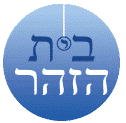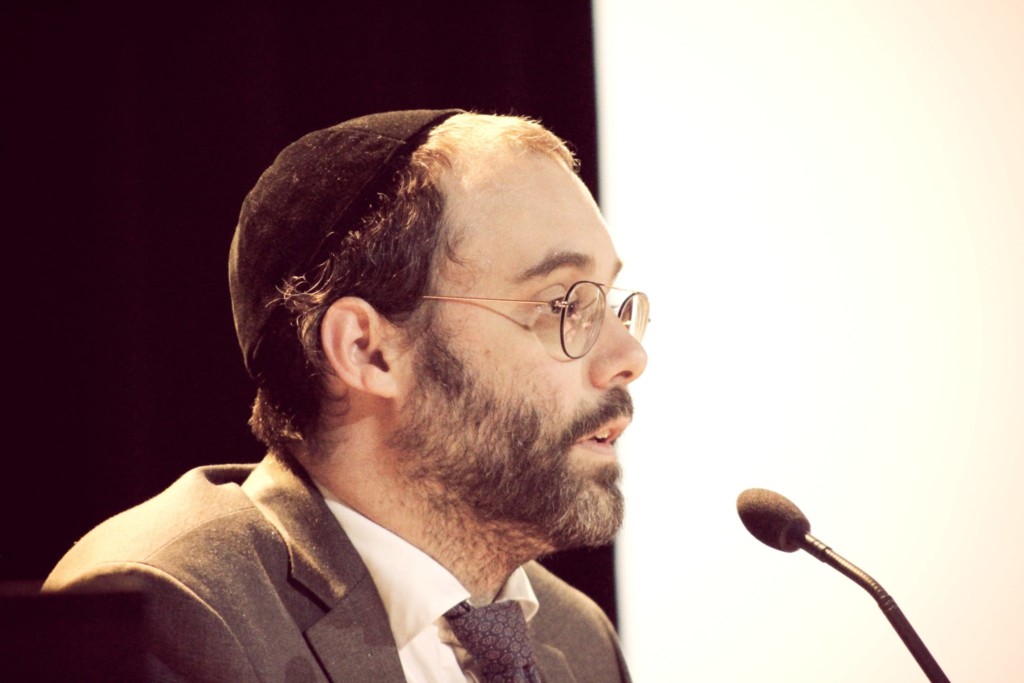Cette publication est également disponible en :
Français
Paper by Julien Darmon
Colloque “Le Sefer Yetsirah
Nahmanides (1194-1270) occupies, in the eyes of the later kabbalistic tradition as well as those of academic research, an axial place in the history of the Kabbalah. For the first, attested in particular by Hayyim Vital in his introduction to ‘Ets Hayyim , he is the ultimate representative of an authentic transmission that emerged historically in Provence with Abraham b. David de Posquières (1120-1198) and passed through his son Isaac the Blind (1160-1235) and from there to ‘Ezra and ‘Azriel of Girona (1160-1238). For contemporary research, he is with his crypto-kabalistic commentaries on the Torah one of the very first witnesses, and undoubtedly the most important, of the writing of the Kabbalah and the major referent of later kabbalists until the appearance of the Zohar in the early years of the fourteenth century. It is on his work that the direct or indirect pupils of his disciple Salomon b. Adret (1235-1310) whose biblical commentaries take the form of supercommentaries of that of Nahmanides: thus Menahem Recanati (1223-1290), Bahya b. Asher (1255-1340), Joshua Ibn Shu’ayb (c. 1280-c. 1340), Shem Tov ibn Gaon (1283-c. 1330) and Isaac of Acre (1250-1340).
However, if the kabbalistic tenor of his commentary on the Torah is obvious, we do not have any explicitly kabbalistic writings from his hand; hence the interest of having a commentary from his pen on the Sefer Yetzira . (By “explicitly kabbalistic”, we can mean the verification of an ultimately simple criterion: the non-cryptic use of the name of the sefirot , namely Keter, Hokhma, Bina , Hesed, Gevura, Tif’eret, Netsah, Hod, Yesod and Malkhut.) The discovery of such a text would be all the more unexpected as Nahmanides, in his introduction to the Torah commentary and in his epistolary exchange with Isaac the Blind, constantly denounces the new practice of writing down the secret doctrines of Kabbalah. Would he nevertheless have yielded to this temptation, to the delight of his epigones? This opportunity would also fulfill an essential function in the reconstitution of the chain of tradition, since it would allow the insertion of the Sefer Yetzira in the Kabbalistic corpus and to date it much further back in time than the Provençal-Catalan moment, thus providing the latter with the ancient foundation that some of its contemporaries were bound to question. We therefore understand that it is crucial, both for the Tradition and for the Academy, to have such a commentary.
In fact, the princeps edition of the Sefer Yetzira , printed in Mantua in 1562, includes two commentaries thereby canonized, one attributed to Abraham b. David de Posquières, the other to Nahmanides. Later research (Jellinek, Scholem), building on reservations already expressed by 16th-century Kabbalists, has however clearly questioned these attributions, and generally considers that attributed to Abraham b. David de Posquières would in fact be due to Joseph b. Shalom Ashkenazi, pupil of Ibn Shu’ayb, who would have composed it around 1320, and that attributed to Nahmanides should rather be attributed to ‘Ezra or ‘Azriel of Girona.
Scholem further states that the commentary exists in two recensions, a short one, contained in particular in the manuscript Jer. 8°404 except that it lacks the beginning and a long one, contained in the manuscripts of the British Museum, Paris (ms. heb. 763, fol. 31v-34r), Jerusalem and Leyden. He judges that it is the short recension which constitutes the authentic commentary on Nahmanides – and it is the only one of which he gives an edition in his article.
The long version contains a few omissions as well as numerous additions, mainly explanatory glosses. Scholem also considers it to be quite old, but believes that it was drawn up in an Ashkenazi context – although our Paris manuscript is written in Sephardic cursive and presumably copied in Italy.
Soon enough, this “discovery” of Scholem was called into question. In his edition of the Writings of Nahmanides (1962), Charles (Hayyim) Chavel considers that this attribution is not conclusive and that, on the whole, the commentary of the Mantua edition reflects as much if not more the traditions of his school.
The very possibility of Kabbalistic writings from the pen of Nahmanides is also doubtful if one takes literally his explicit opposition to such a step, as evidenced by the epistolary reproaches he addressed to Isaac the Blind. If there were any kabbalistic writings by Nahmanides, they could only be personal notes at most. 1 For the full discussion, see D. Abrams, Kabbalistic Manuscripts and Textual Theory, pp. 198-203 . – which, moreover, is not incompatible with the fragmentary commentary attributed to it by Scholem.
At this point, it is useful to step back and consider more broadly the various commentaries attributed to the very first generations of Provenço-Catalan kabbalists. It has long been accepted that the commentary attributed to the Raavad is actually due to Joseph b. Shalom Ashkenazi, student of Ibn Shu’ayb (circa 1320). Avishai Bar Asher, in a recent in-depth study2 Avishai Bar-Asher. דמיון ומציאות בחקר ראשית הקבלה – Illusion versus Reality in the Study of Early Kabbalah: פירוש ‘ספר יצירה’ המיוחס לר’ יצחק סגי נהור ותולדותיו בקבלה ובמחקר.” Tarbiẕ, vol. 86-2/3, Mandel Institute for Jewish Studies / מנדל, 2019, pp. 269-384. , argued convincingly that the attribution of that of Isaac the Blind was also apocryphal and that it was probably written in the same milieu of Catalan kabbalists from the very end of the 13th century. The commentary attributed to Nahmanides in the Mantuan edition was, once its apocryphal character established, attributed to ‘Ezra or ‘Azriel of Girona, but it seems without any other convincing arguments than the conviction that it must to act as a “principial” commentary – even though its style seems later than the “authentic” commentary of Nahmanides which concerns us here. Avishai Bar Asher, about the latter, also deconstructs the arguments put forward by Scholem to authenticate him on the basis of the passages quoted in the works of the successors of Nahmanides. The Hebrew manuscript 763 of the BNF also contains, on folios 12r-21v, a text by Asher ben David, grandson of Abraham ben David de Posquières, nephew of Isaac the Blind and contemporary of Nahmanides, which offers a long kabbalistic exegesis of the Tetragrammaton. Insofar as he repeatedly resorts to the Sefer Yetzira , it is not forbidden to think that this is Asher ben David’s lost commentary on this book, although it is not properly speaking of a follow-up commentary, far from it. The presence of a gloss in Provençal in 21r pleads in any case for a Catalan pre-period origin.
The first assessment of this panorama seems at first very disappointing: none of these texts, so often presented as the first traces of kabbalistic literature, would be authentic? Should we only see clumsy attempts, on the part of generations after the golden age closed with Nahmanides and before the emergence of the Zohar , to reconstitute a written trace of the passage from the “kabala” of the Sefer Yetzira to that of Provence and Catalonia?
Paradoxically, the use of the long version of the Paris manuscript, traditionally presented as later and therefore virtually uninteresting, makes it possible to shift the gaze. The long version certainly omits the three passages where the short version expresses misunderstandings or hesitations – “I don’t know”, “it’s not clear”, which is consistent with a subsequent “smoothing out”. Above all, it systematically adds clarifications as to the sefirotic symbolism. The short version focuses on Hochma and Bina (as these words appear in the Sefer Yetzira ), as well as Keter , and adds Gedula / Gevura along with Netsah and Hod , but Tiferet and Malchut are absent altogether. The long version, for its part, adds long developments on Malchut , which it calls ‘ Atara (in 32v. in particular), as well as the expression ‘ilat ha-‘ilot , “cause of causes”.
Cet ensemble de phénomènes est significatif dans la mesure où les notions comme les noms des sefirot supérieures sont absentes du Commentaire sur la Torah de Nahmanide, qui concentre l’essentiel des propos kabbalistiques sur la dialectique entre Tif’eret et Malkhut – sans jamais les désigner nommément. De cela, il ne faudrait évidemment pas conclure que Nahmanide « ignorait » les autres sefirot, celles-ci étant consubstantielles à la kabbale provençale et espagnole. L’intention élucidatrice de la version longue est similaire aux surcommentaires des élèves de Salomon ben Adret sur le Commentaire sur la Torah de Nahmanide, comme en témoigne ce souci d’expliciter les notions de Tif’eret et ‘Atara. En effet, cette méthode d’écriture est caractéristique notamment de la Me’irat ‘Einayim d’Isaac d’Acre et de la Ma‘arekhet ha-Elohut, alors que le terme même de ‘Atara si typique de cette école ne se trouve qu’une seule fois dans le commentaire du Sefer Yetsira attribué à Nahmanide dans l’édition de Mantoue, une seule fois dans les écrits de Nahmanide réunis par Chavel (in Derashat ‘al divrei Qohelet, Kitvei Ramban, t. I, p. 180), et aucune fois dans son Commentaire sur la Torah. On notera encore que les noms de Tif’eret et ‘Atara ne figurent dans notre version longue que sous la forme d’abréviations, ce qui peut signifier deux choses non exclusives l’une de l’autre : que les termes sont déjà bien connus du lectorat visé, et qu’il faut encore en dissimuler le nom aux regards non initiés.
There is little doubt that this long version is a later, secondary elaboration of the short version. However, if we accept the dating of ms. heb. 763 of the year 1284, as defended by Giacomo Corazzol at the opening of the symposium devoted to this manuscript at the Museum of Art and History of Judaism in Paris on November 14, 2021, then the chronology becomes interesting. Indeed, Nahmanides left Spain for the land of Israel in 1265-1267 and died in 1270. This therefore means that in the space of a few years, his disciples and contemporaries work to elaborate several successive versions of a commentary on the Sefer Yetzira which they attribute to him (and which may well be based on fragments preserved in our text), even before the birth of the last representatives of this school, such as Joshua ibn Shu’ayb and Shem Tov ibn Gaon. It is probably to this same milieu that we must attribute the elaboration, again in successive layers, of the commentaries attributed to Isaac the Blind, Abraham ben David, ‘Azriel of Girona, etc. Paradoxically, the kabbalistic commentary on the Tetragrammaton of Asher ben David would be the representative of an older way of writing, which is based on the maxims of the Sefer Yetzira without feeling the need to justify his statement by adopting the form of a commentary followed by this one. All this kabbalistic production datable to the years 1270-1280 turns out to be remarkable for its profusion and inventiveness. This observation invites us to finally get rid of the notions of “authentic commentary” and “original version”, which do not really make sense in the context of the writing practices of the 13th century and which, by opposing the texts to each other, often prevent us from perceiving its richness and polyphony.
Plein Écran




